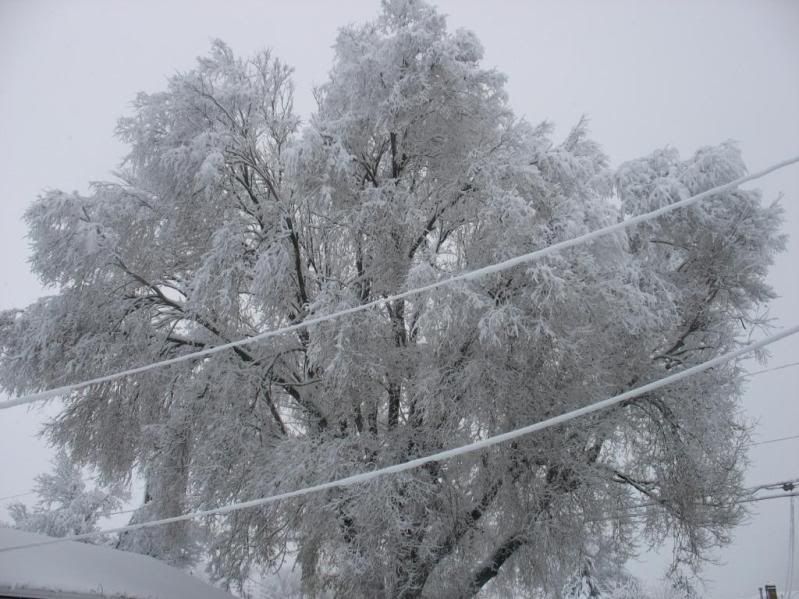northernlad
ArboristSite Lurker
Hi,
I am hoping you all can help diagnose some problems I have with my Elm tree.
I live in Northwest Washington. I inherited this tree when I bought my house. Last winter was unbelievably windy, cold and snowy for these parts. Despite my fears, my tree made it through unscathed. The winds have started up again this year and I am afraid again that I will wake up with a giant limb in my bed.
I had an arborist out this last March and his only concern was the size of the canopy and the fact that it has been improperly topped in the past.
I have included some pictures of the tree and spots that concern me.
Any ideas?
Thanks.
This is a picture for size perspective:

Old Topped Areas:

Halfway down the street:

Last Winter Canopy. Note how it towers over the corner of my house on the left:

Moldy Leaves:

Mossy Green Streaks:

Rusty Rotten Spot (there are about 4 all around the tree) drips onto my lawn and kills it:

Dead Grass under Rusty Rotten Spot:

I am hoping you all can help diagnose some problems I have with my Elm tree.
I live in Northwest Washington. I inherited this tree when I bought my house. Last winter was unbelievably windy, cold and snowy for these parts. Despite my fears, my tree made it through unscathed. The winds have started up again this year and I am afraid again that I will wake up with a giant limb in my bed.
I had an arborist out this last March and his only concern was the size of the canopy and the fact that it has been improperly topped in the past.
I have included some pictures of the tree and spots that concern me.
Any ideas?
Thanks.
This is a picture for size perspective:

Old Topped Areas:

Halfway down the street:

Last Winter Canopy. Note how it towers over the corner of my house on the left:

Moldy Leaves:

Mossy Green Streaks:

Rusty Rotten Spot (there are about 4 all around the tree) drips onto my lawn and kills it:

Dead Grass under Rusty Rotten Spot:







